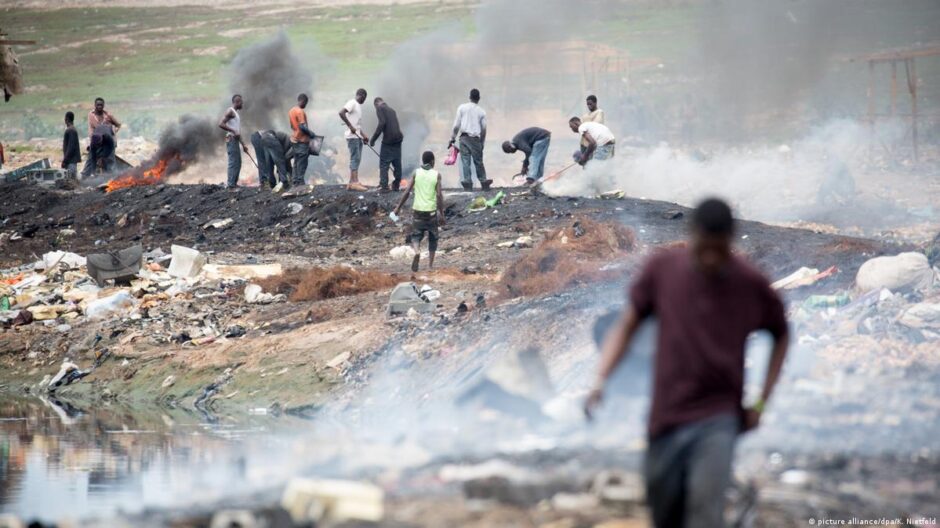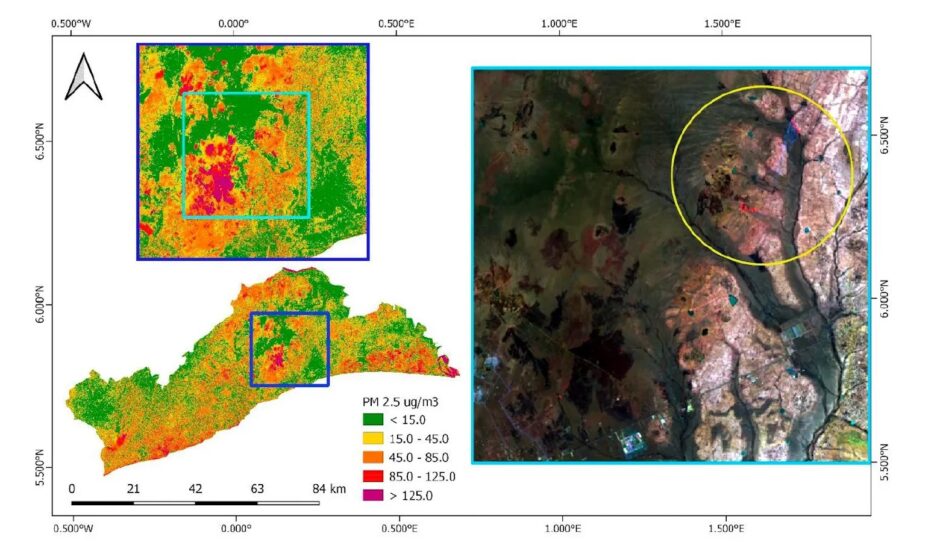
Researchers are utilizing satellite imagery to monitor air pollution levels and sources of emission in Accra.
They are leveraging the power of multi-spectral visible bands of Landsat 8 satellite imagery to map out areas with poor air quality by targeting Particulate Matter (PM) 2.5.
A PM 2.5 is a tiny piece of solid or liquid particles with a diameter of 2.5 micrometers, which is thinner than a strand of human hair and is more dangerous since it can enter the deepest parts of the lungs or even the bloodstream, creating health problems.
The study was titled, “Algorithm for estimating particulate matter concentrations using Landsat 8 multi-spectral satellite images: An urban air quality mapping over Accra, Ghana”.
Mr Cosmos Wemegah, one of the lead researchers said the study sought to develop an empirical algorithm to estimate particulate matter less than PM2.5 over Accra by integrating low-cost sensor data into multi-spectral visible bands of Landsat 8 satellite imagery.
“We found that the air quality in Accra was generally poor but few green spaces had low concentrations of PM 2.5, while the rest had high intensity at the time of the satellite overpass. The finding is in line with data from low-cost sensors,” he said.
The satellite imagery, he stated, showed areas outside of the urban space such as Dodowa, Aburi, and Suhum experienced relatively lower pollution levels.

Mr. Wemegah, who is a Research Fellow with the Earth Observation Research and Innovation Centre at the University of Energy and Natural Resources said the country’s lack of adequate ground-based stations hindered the monitoring of air pollutants to inform decision-making and enforce air quality regulations.
He told the Ghana News Agency that air pollution was one of the major environmental challenges of urbanisation in the country’s cities. “This undermines the progress in achieving sustainable development goals 3, 11, and 13 which seek to promote good well-being of the public, making cities and communities sustainably safe and resilient and taking actions against climate change respectively,” he said.
He suggested decongestion of the city, strict enforcement of vehicle emission regulations, ensuring that developers followed green space rules, and an effective waste dumping system to combat air pollution.
Air pollution is the second biggest threat to health in Ghana and causes 28,000 deaths a year, according to the World Health Organization (2020).
It is the second highest health risk factor for death and disability, after malnutrition. Young children and adults over 50 are most at risk of disease and premature death.
Poor air quality in Ghana is mainly caused by cooking using wood and charcoal, road transport, slash-and-burn methods of farming, open waste burning, energy generation, accidental fires and industry.
Ghana is one of only seven African countries with real-time air pollution monitors, but the availability and accessibility of air quality data is limited, according to the Clean Air fund.
The government does not have a nationwide air quality policy or targets.
However, there are sector-specific policies and guidelines that address air pollution, as well as clean air initiatives in Accra.
***
This story was a collaboration between Ghana News Agency and New Narratives. Funding was provided by the Clean Air Fund which had no say in the story’s content.
